To give them their full name, the 1st Battalion, 42nd (Royal Highland) Regiment of foot, or the Black Watch, is the final Highland regiment that I wanted to add to my Napoleonic collection. I am using the 100 days War order of battle as the basis for my Napoleonic Army. The Black Watch is the last Highland regiment that I need to complete and the penultimate battalion required to finish the British contingent of the 5th British Infantry Division at Waterloo. I already have the 1/28th, 1/32nd, 1/95th and 1/79th of Kempts 8th British Brigade as well as 2/44th, 1/92nd of Pack’s 9th British brigade. The two brigades together, along with the 5th Hanoverian Brigade, formed the 5th Division under the command of Sir Thomas Picton.
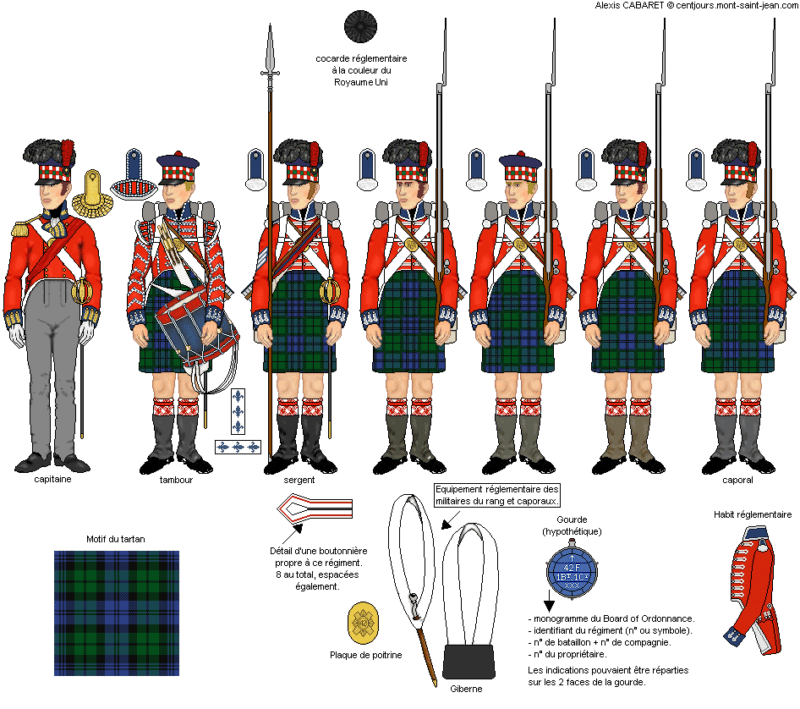
1/42nd Battalion Centre Companies
As usual, I referred to the superb Mont St John web site for painting details – I’ve put the link below. The challenge in painting Highland regiments is of course the kilts. As yet, paint manufacturers have woefully failed in attempting to produce tartan paint, so you have to do it yourself! ( That was a joke by the way – a very old one, but a joke nonetheless!) As I had already painted two Highland regiments, I was fairly confident that the Black watch would be straight forward as there are just three colours, Blue, Green and Black. My painting skills and patience are not sufficient to make an exact copy of the tartan in 28mm scale – I wanted something that looked about right for the wargames table. As is often the case, I did a ‘test figure’ before committing to batch painting the Battalion.

Black Watch Sergeant next to the Camerons and Gordons.
I was reasonably happy with the result but did try a figure with a slightly different, lighter green on the kilt. It made little difference and if anything, I preferred a darker look to the kilts so adding an extra black line to the design had the desired effect. Just for fun, I produced a very quick step by step guide to how I painted the tartan. It won’t be to everyone’s taste but if you are new to the hobby, it might be helpful as a place to start.
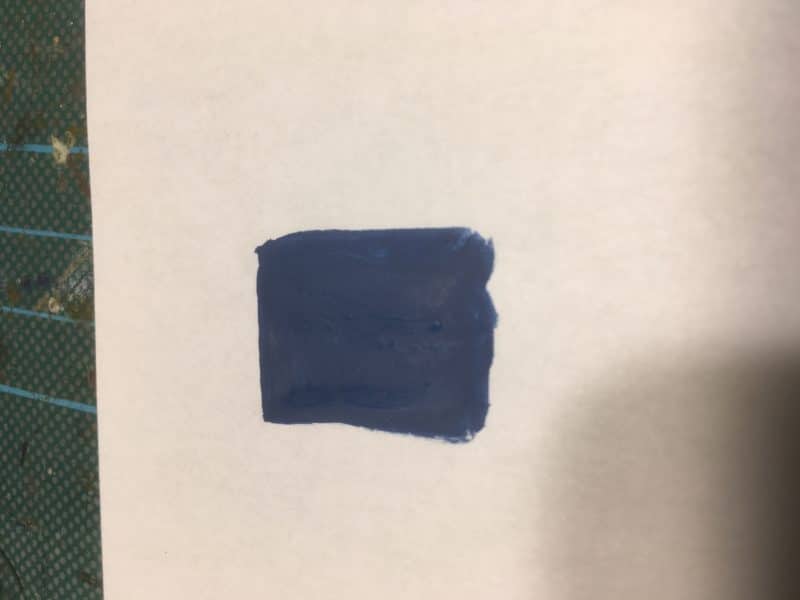
Vallejo Prussian Blue 70965
First I painted the kilts in Prussian Blue Vallejo 70965. You can see this both on the paper above and on the actual models below. For clarity, I’ll show the rest of the process on the paper only.

Kilts in prussian blue
Next paint three stripes in Vallejo reflective green 70890. The trick here is to select the right sized paint brush and to make sure that the paint is flowing easily off of the brush by thinning it to the consistency of milk.
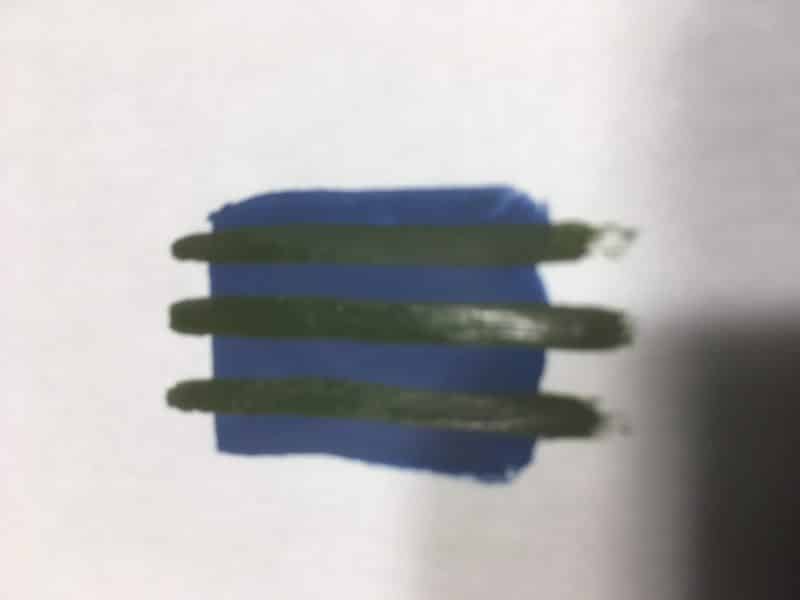
Three stripes of Green – vertically or horizontally – which ever you prefer first!
Now paint another three stripes across the first three. Again, let the brush do the work. The only other point to note is to try to space the stripes evenly at about the same width.

Reflective green 70890 cross hatched.
Now purists could paint the squares where the green lines cross with a slighter lighter shade. I ignore this detail – I am looking for a decent approximation of tartan, not an accurate reproduction.

Cross the lines! Outline the green lines in black.
The next two pictures show that I take a finer brush and again, thinning the paint to ensure that it flows smoothly, outline the green lines in black. You can see that it doesn’t have to be perfect! A steady hand does help but you can always touch up the green lines if the black is too thick.

Outlining complete
The next part is tricky and again, you will need a steady hand and importantly the paint must be thinned so that it flows off of the brush in one stroke. So paint a black line through the blue squares, both vertically and horizontally!
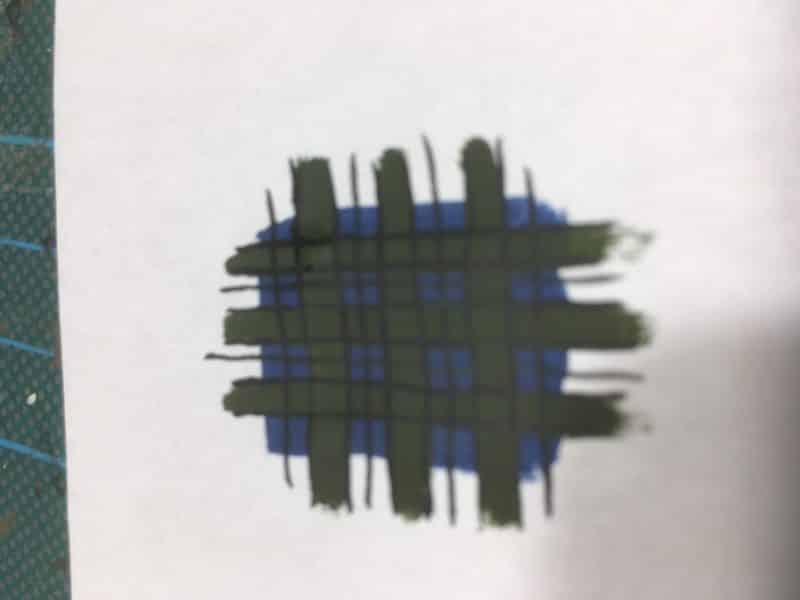
cross hatch through the blue squares!
Repeat the same pattern through the green lines.
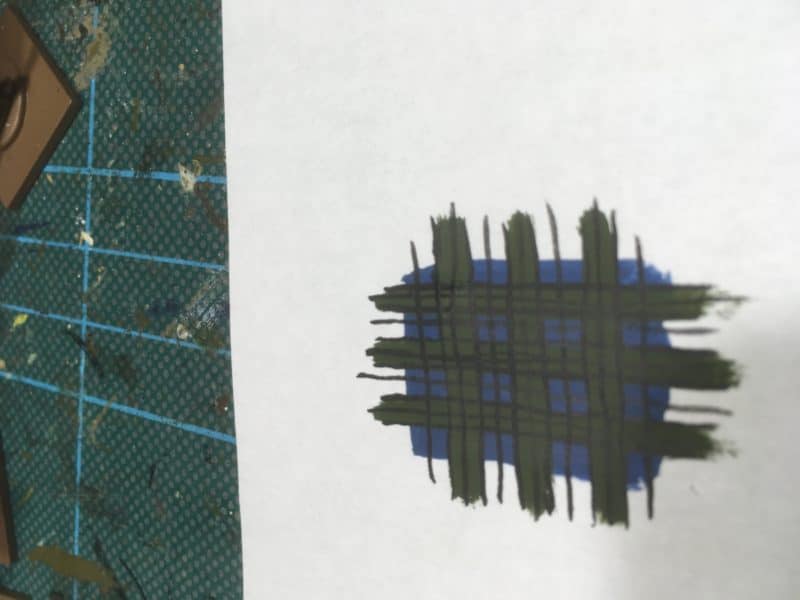
Cross hatch through the green.
You can see that I’ve made a few mistakes but I’m not too concerned and the next picture will show why. That said, it would be easy enough to correct with a touch of green paint. It’s worth pointing out again that you are painting a cloth pattern on a small miniature and unless you intend to enter your figures in a competition, perfection is not required.
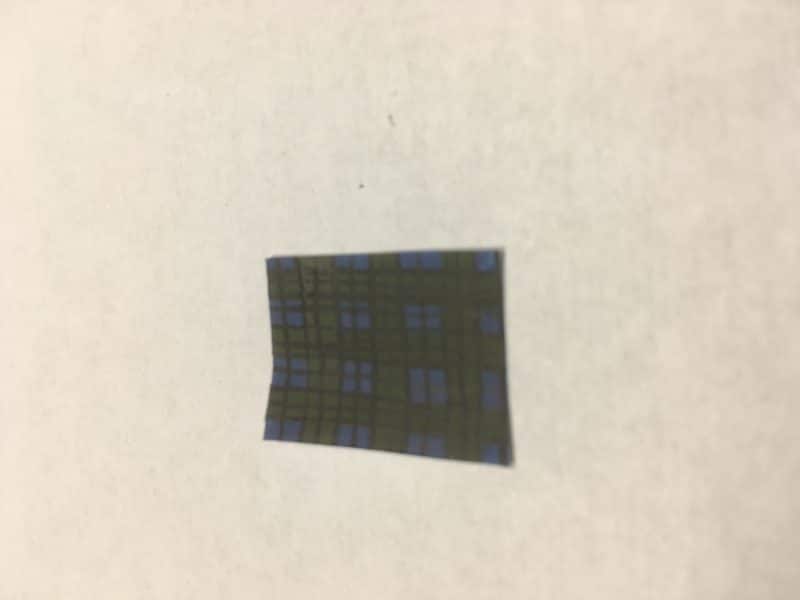
The finished pattern, cut from the paper.
I did the above step by step in about 10 minutes last night just for the blog. Hence the glossy look on some of the pictures – the paint was still drying! I hope that you agree that the finished result, which I have tidied up by cutting from the paper looks fine for a battalion of wargames figures. Incidentally, I do paint straight onto the figures – this an exercise to show the method.

The nearly completed figures
So this is how my first batch of 12 figures look at the moment. A few points to note. The Black Watch had all red tufts (hackles) on the centre company, red over green for the light company and red over white for the Grenadiers. I need to ‘dot’ in the green squares on the hat band and of course they need to be based properly. All of which I’ll do once the other 12 have been painted. I also need to go back to the test figure ( the sergeant) and add some extra lines to his kilt!

Another view of the first 12 figures
I hope that this has been useful to anyone that is wondering how to go about painting Highlanders. In the links below you can see how I went about completing the Gordons and Camerons. I’m putting these aside for a week or so, whilst I go back to my War of the Roses army – there’s only so much tartan I can paint in one batch!
THE COMMERCIAL BIT
Almost all of the paints, miniatures, bases, basing materials and anything that you are likely to need for your hobby are available POST FREE from my shop here:
The Victrix Highlanders can be found in the Victrix category here:
We carry a huge range of Vallejo, either browse the category – or to find individual paints, type the number into the search bar:
You can visit the Mont St Jean site here:
To see another blog article on painting tartan, in this case the Camerons, click here:
Happy Modelling!
